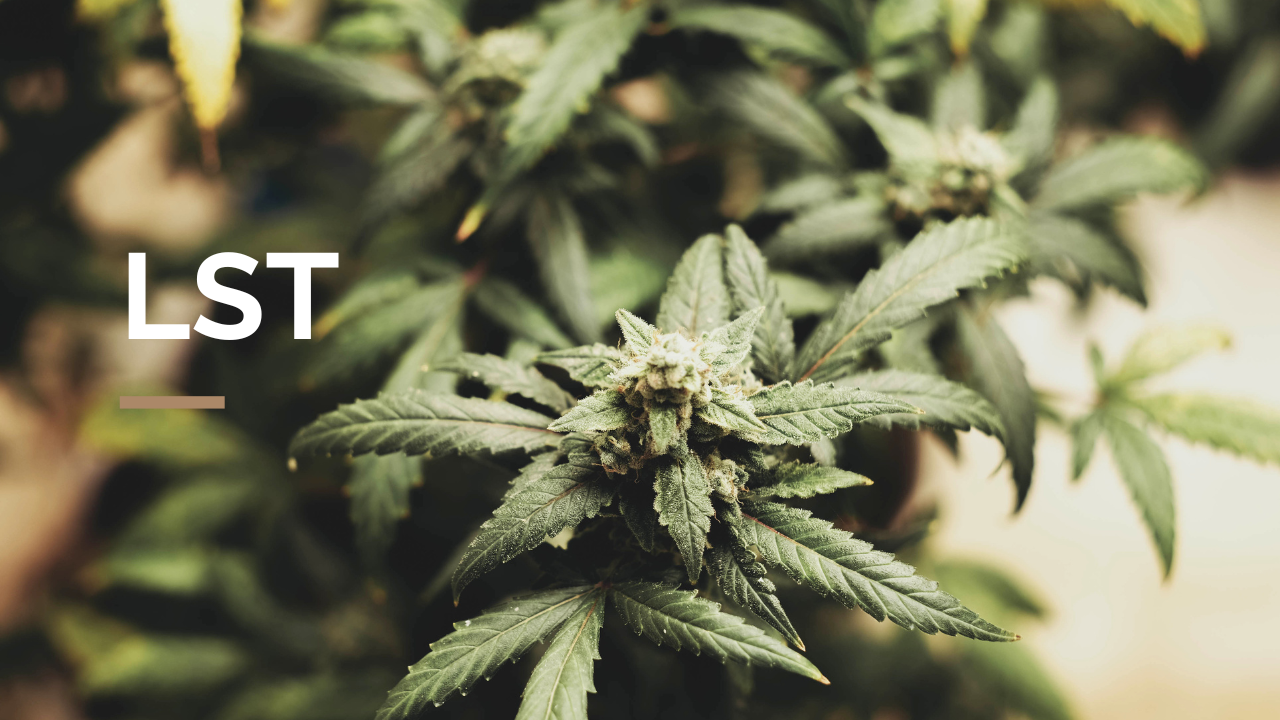Beginner's Guide to Low-Stress Training for Cannabis

Low-Stress Training (LST) is a popular technique in cannabis cultivation, especially suited for beginners. This method allows you to gently shape your plants by carefully bending the branches and stems. By doing so, you can control the plant’s growth direction while simultaneously increasing yields. In this guide, you’ll learn how to effectively train your plants with LST to achieve healthy and bountiful results.
Table of Contents
- Benefits of Low-Stress Training
- Drawbacks
- LST vs. HST
- How to Perform Low-Stress Training
- Pro Tips for Successful LST
- Conclusion
Benefits of Low-Stress Training
LST offers several advantages that make it an ideal method for beginners. One of the biggest benefits is that it causes less stress to the plant compared to High-Stress Training (HST). By gently bending the branches, you improve air and light circulation, which leads to higher yields. Additionally, you can better control the size of the plant and achieve a more even distribution of the buds.
Drawbacks
One drawback of LST is the time and patience required to properly shape the plant. It’s also important to regularly check and adjust the plant to avoid damage. However, with proper care and attention, LST can lead to significantly higher yields.
LST vs. HST
In Low-Stress Training (LST), the branches of the plant are gently bent and secured to direct growth in the desired direction. In contrast, High-Stress Training (HST) involves more drastic pruning, which can stress the plant. While HST shapes the plant more quickly, it can slow down growth as the plant needs time to recover. LST, on the other hand, is a gentler method, particularly preferred by beginners and for autoflowering strains, as it minimizes the risk of growth delays. Deepen your knowledge of the differences and benefits of HST in our comprehensive guide Training methods for cannabis plants.
How to Perform Low-Stress Training
Here are the steps to help you successfully perform LST:
- Prepare the pots: Start by drilling small holes along the edge of your pot or container. These holes will be used to gently tie down the branches of your plant later on. This preparation ensures that you can position the branches as needed without damaging the plant. Make sure the holes are evenly spaced to allow flexibility in arranging the branches.
- Securing the main stem: After preparing the holes, begin by gently bending the main stem of the plant toward the edge of the pot. It’s important to proceed slowly and carefully to avoid breaking the stem. Once the stem is in the desired position, secure it with soft materials like rubber bands or jute twine to the holes you’ve drilled. This anchoring ensures the stem stays in place and directs the plant’s growth where you want it.
- Regular shaping: To ensure your plant grows evenly and makes the best use of light, you should regularly adjust its shape. This means gently bending and securing the branches so that they spread out horizontally. This not only encourages the growth of side branches but also increases the number of bud sites as more light reaches different parts of the plant. Check the plant weekly to ensure it’s developing as desired.
- Maintenance: Finally, it’s important to regularly care for the plant throughout the growth process. Check the ties to ensure they aren’t cutting into or damaging the plant. If you notice a branch is damaged or not growing as expected, prune it carefully to encourage healthy growth of the rest of the plant. Remember, regular maintenance is key to a healthy and productive plant.
Pro Tips for Successful LST
To further improve your LST results, consider a few additional techniques. One is gradually adjusting the direction of the branches over time. If you slightly change the direction in which a branch is bent every few weeks, the plant is forced to distribute its energy more evenly, leading to overall stronger growth. Another tip is to use reflective surfaces to direct light onto the lower parts of the plant. By placing reflective film on the ground around your plant, light that would otherwise be lost can be redirected back onto the plant, promoting the growth of lower buds. Finally, consider combining LST with light defoliation to maximize light exposure to the buds and promote growth. These small adjustments can make a big difference, especially when aiming for higher yields.
Additional Tip:
For even better results with Low-Stress Training, it’s recommended to use special tools like plant ties or flexible wires designed for gentle plant handling. More tips and the best products for your LST project can be found in our article LST Techniques for Professionals.
It’s important to perform LST during the vegetative growth phase before the plant begins to flower. Use the right techniques and materials to avoid stressing or damaging the plant. With careful application, LST can lead to impressive yields.
For beginners working with autoflowering strains, it’s especially important to proceed gently to avoid overwhelming the sensitive plants. Even simple techniques can lead to significant improvements. Start your LST with the right tools and techniques to achieve the best results.
Disclaimer
This website's content is for informational use only and should not be considered medical or legal advice. Always consult a healthcare professional for health-related issues. Be aware of local regulations regarding cannabis cultivation. We are not liable for any actions taken based on this information.
